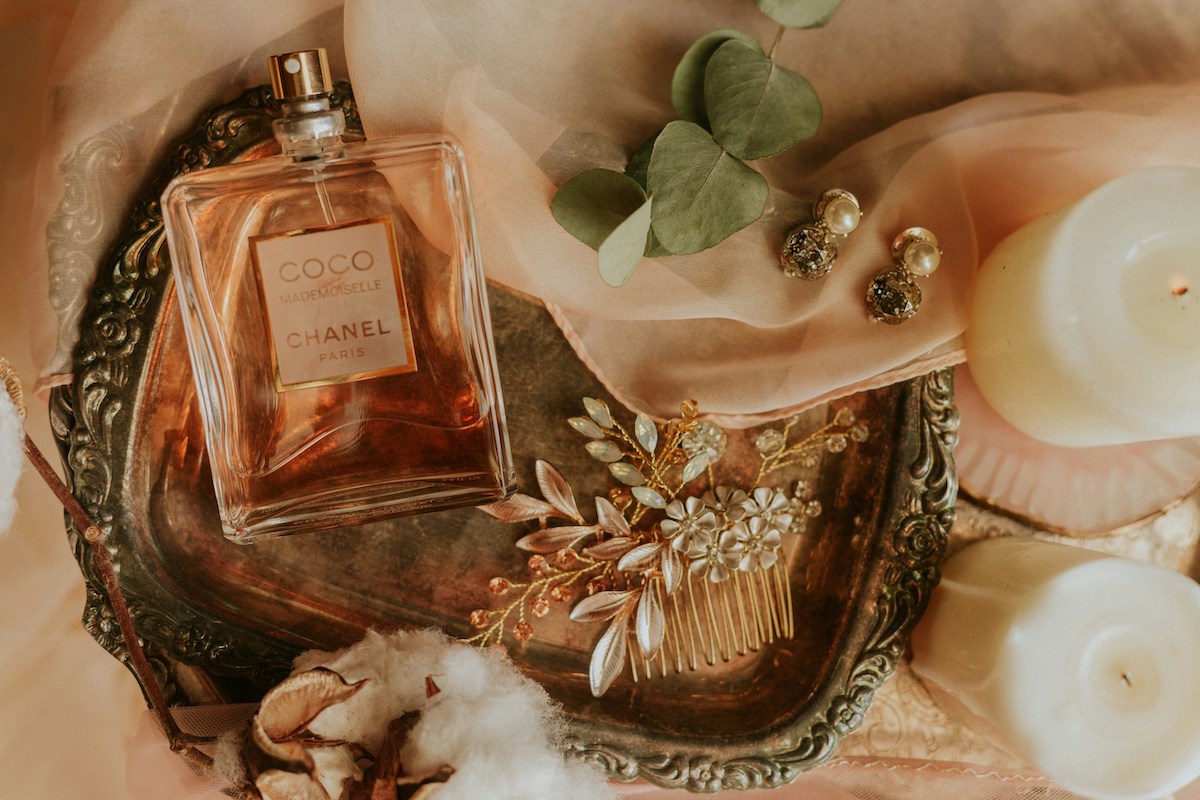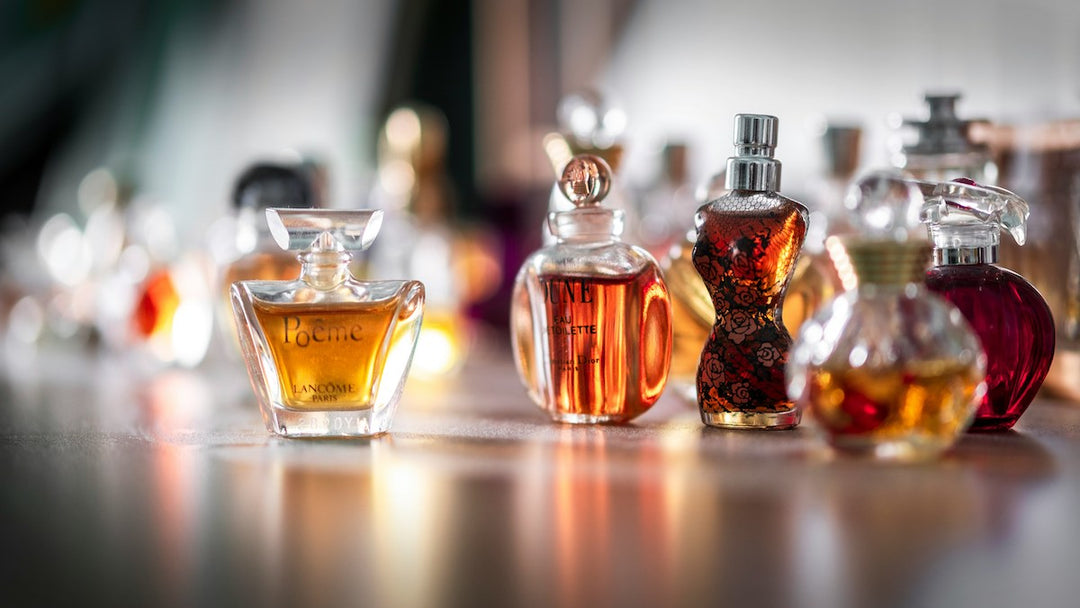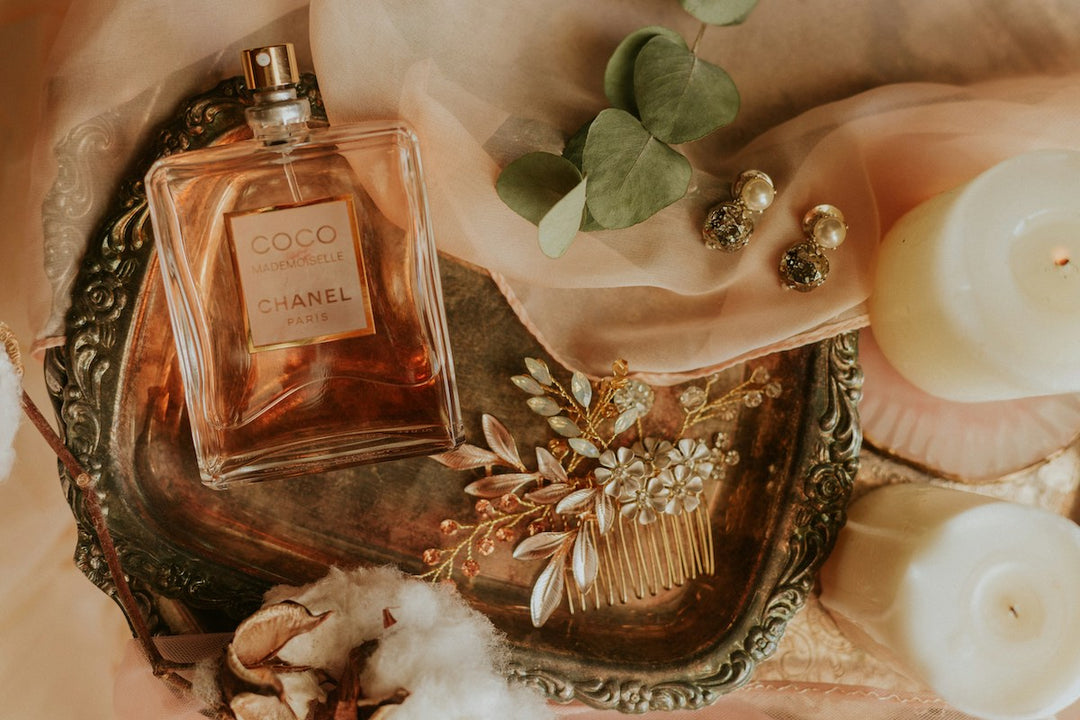Luxury perfumes are so expensive due to the quality of ingredients, meticulous craftsmanship, brand reputation, and branding and marketing expenses. They aren't simply a blend of raw materials, they tell a brand's story crafted by master perfumers.
Luxury perfumes aren't just about the smell. They're about the story, the brand, and the craftsmanship that goes into each bottle. When you buy a high-end perfume, you're not just paying for the liquid inside the bottle.
From sourcing rare ingredients to the time-consuming extraction methods, creating a unique scent is an art. And just like any other form of art, it doesn't come cheap. So, next time you spritz that expensive perfume, remember, you're wearing a masterpiece.
The Intricate Production Process of Perfume
Imagine stepping into the world of a master perfumer. You'll find a realm coloured by aromas – a delicate dance of scent, science, and artistry. When we talk about luxury perfumes, we are not just reviewing a concoction of fragrant oils. We search into a complex creation process, one that justifies their lavish prices.
So, what makes fragrance production so intricate? Let's search into the grand scheme that transforms raw materials into bottled elegance.
Journey from Field to Flask
Much like wine, the essence that lends perfume its distinct character begins its journey in the field. Perfumes often incorporate natural ingredients, and these are sourced from around the world. Imagine tracking the life cycle of a single rose bud from its birth in a French field to its transformation into an essential oil. You'd maintain rigorous quality standards throughout - from selection, extraction, to preservation.
Time-Consuming Extraction Methods
Have you ever wondered about the extraction methods employed in perfume production? They're as nuanced as the fragrances themselves. Classic extraction techniques like distillation, maceration, and enfleurage require tremendous time and labour. More sophisticated methods like supercritical fluid extraction exist but they are expensive to implement.
Distillation and maceration, for instance, require a vast quantity of petals - the yield from thousands of roses equates to a mere handful of pure rose oil. Enfleurage, an old, French technique even more labour-intensive, used most commonly with jasmine or tuberose, produces heavenly, creamy essences.
The Art of Blending
After the successful extraction, the master perfumer, or nose, takes stage for the most artistic part of the process: blending. This involves faithfully following a carefully designed recipe to weave together the different elements, creating an unforgettable fragrance.
It's here that the magic happens. It may take months, or even years, to strike the right balance. Every tweak the nose makes, every small adjustment in the recipe, adds to the charm, the character of the final product.
The Value of Ingredients in Perfume
Shifting the focus to the value of ingredients, you'll see another aspect that adds to the high cost of luxury perfume. In the realm of high-end fragrances, ingredients are king. Procuring natural ingredients from various corners of the world—like Vetiver from Haiti, Jasmine from India, or Oud from Southeast Asia—isn't just a simple procurement process. It's a quest for quality that comes with extravagant price tags.
Natural ingredients aren't plentiful. Just ponder upon this, to produce just 1 kilogram of jasmine oil, one would need between 7-8 million jasmine flowers. That's a colossal quantity for a minuscule amount of oil! Have a glance at this data below:
|
Ingredient |
Flowers needed for 1kg of oil |
|---|---|
|
Jasmine |
7-8 million |
|
Rose |
Around 600,000 |
Furthermore, the extraction methods to get these pure oils are expensive and time-consuming. Be it distillation, maceration, or the traditional French technique of enfleurage, each process demands exceptional patience, precision, and care. As you can imagine, all these meticulous processes add up, contributing to the high price.
High-end perfumery revolves around the artistry and genius of the 'nose', the master perfumer. These experts create wonder in bottles, precisely blending different scents. Each tiny tweak or adjustment to the 'recipe' can dramatically alter the final fragrance. They're not just mixing ingredients - they're quite literally designing scents! Their countless trials, skills, years of expertise, and high demand contribute notably to the cost.
So, when you splash or dab on your luxury perfume, remember—you're not just wearing a scent. You're sporting a work of art, conjured from nature's lap, crafted with diligent care, and sealed by a master's touch. The value of the ingredients, the laborious extraction process, and the artistic blending—it all factors into why your perfume comes with a hefty price tag. It's an immersive experience, a journey that speaks volumes about quality.
The Story, Brand, and Craftsmanship of Luxury Perfumes
Venturing beyond the value of raw materials and costly production process, there's more to a luxury perfume that affects its price. The story behind the fragrance, the reputation of the brand, and the craftsmanship involved in its making all combine to give each perfume its price tag.
You might be aware that the fragrance industry is built on brands –brands that are steeped in history and have a rich legacy of delivering high-quality products. Brands like Chanel, Dior, and Gucci don't just sell perfume; they sell an experience. When you buy a luxury perfume, you're paying for the brand's reputation. But it's not just about the brand's name; it's also about the story that the perfume tells. Each perfume has its own narrative associated with it— a narrative that holds the essence of the brand’s identity, its heritage, and its vision.
Let's talk about the craftsmanship. Luxury perfume isn't just mixed in a lab. It's skillfully crafted using a blend of art and science. The nose, or master perfumer, has to balance a complex array of scents and notes, which can sometimes number in the hundreds. The creation of a new fragrance is a lengthy and painstaking process, one that can take up to several years. This craftsmanship, and the resulting uniqueness of each fragrance, is what makes each drop so precious and valuable.
There's no doubt that each component plays a crucial role in the high price tag associated with luxury perfumes. From the narrative crafted around each scent, the reputation of the brand, to the skilled craftsmanship, it all feeds into the allure and exclusivity of owning a luxury perfume. For many, it's not just a scent; it's a personal statement and a symbol of good taste and sophistication.
The Art of Creating a Unique Scent
When you inhale a luxury perfume, you're stepping into a meticulously crafted scent-scape. You're experiencing weeks, months, sometimes even years of painstaking work performed by master perfumers, known in the industry as "noses". These smell experts are highly trained talent who've honed their senses and expanded their olfactory vocabulary extensively. They're the composers of this orchestration, where each note, top, middle or base, must play harmoniously to create a luxury perfume's symphony.
Their workstep involves the adroit collection of hundreds of ingredients and conducting a comprehensive study of them. From regular ingredients like rose and jasmine to the rare agarwood or ambergris, every component is evaluated in-depth. Different extraction techniques, like steam distillation or solvent extraction, are utilised to obtain these raw materials, which are then artfully blended into unique scents.
The process of perfume creation is not just about combining pleasant smells; each ingredient used tells part of the perfume's story and forms a chapter within its narrative. A single fragrance can have dozens, sometimes up to hundreds, of ingredients. Each element added must contribute to the final composition without overwhelming it. It's a profound understanding of each essence's chemistry that enables the perfumer to construct a balanced, compelling scent with depth and complexity.
Yet, there's more to it than science. Creating a perfume is an art - much like painting or composing music - subject to interpretation and personal touch. It involves selective pairing of ingredients; a rose essence from Bulgaria imparts a different aroma compared to roses from Morocco owing to variations in soil and climate. These subtle differences contribute to the individuality of each perfume, diversifying the broad spectrum of fragrances available in the market.
In essence, creating a luxury perfume is a delicate dance between science and art. The precision needed, the hours spent on refining, and the personal touch of the perfumer – all these bring a distinct uniqueness to luxury perfumes. It's no wonder these fragrances often come with a lofty price tag. They're not just products but artistic expressions encased in exquisitely crafted bottles, which some might argue is a form of modern art in its own right.
Why High-End Perfumes Come with a Hefty Price Tag
Let's unravel the mystery behind the extravagant price tags of high-end perfumes; there's a lot more than meets the eye and nostril.
When you step into a store and pick a bottle of Chanel No.5, you're not just buying a perfume. You're investing in a meticulously crafted narrative, a representation of the brand's identity, meticulously preserved through the scent. It's not just a blend of raw materials, but an elaborate fusion of tradition, innovation, and artistry. This craftsmanship creates a unique brand narrative which is a key aspect of why luxury perfumes cost a lot.
To manufacture a signature scent, it's the master perfumers, or 'nez' in the perfume industry who are at the forefront. These experts, often with years of training, artfully balance a complex array of notes. It's like composing a symphony where each note plays a critical part but no single one dominates. You could imagine the level of meticulousness involved in this process!
Talking about the perfume ingredients, take a moment to think about Jasmine from India, Rose from Turkey or Sandalwood from Australia. These natural elements are sourced from around the globe, and there's a price to pay for such acquisitions. Besides, their extraction methods to obtain pure oils are no less than a feat, demanding time, labor, and complex process flow.
Leading brands like Chanel, Dior, or Gucci use up to 80 different ingredients in various quantities in a single perfume. The fact that these need to be internationally sourced drives up the cost even further.
Here's a peek at the distribution of costs in a luxury perfume.
|
Component |
Cost Percentage |
|---|---|
|
Branding and Marketing |
30% |
|
Packaging |
15% |
|
Ingredients |
25% |
|
Manufacturing & Operations |
30% |
As you see, the actual ingredients comprise only a quarter of the total cost. Thus, it's the branding, packaging, and manufacturing operations that contribute generously in marking up the price of high-end perfumes.
Craftsmanship, quality of ingredients, brand reputation, and a catchy narrative: these elements combinatively determine the price of your favourite scent. Now you know why a bottle of luxury perfume doesn't come cheap.
Frequently Asked Questions
What makes luxury perfumes much more expensive?
Luxury perfumes incur high costs due to the quality of ingredients, meticulous craftsmanship, brand reputation, and branding and marketing expenses. They aren't simply a blend of raw materials, they tell a brand's story crafted by master perfumers.
How many ingredients does a luxury perfume typically have?
Leading brands typically use up to 80 different ingredients in a single luxury perfume. This variety contributes significantly to the overall cost.
Why do master perfumers play a crucial role in perfume production?
Master perfumers are akin to composers, responsible for balancing a complex array of scent notes in perfumes. Their expertise enhances the narrative of the brand and ensures the product's quality.
Where are perfume ingredients sourced from?
The natural ingredients in perfumes are sourced globally. This worldwide sourcing can be both time-consuming and expensive, which is reflected in the overall cost of the product.
How is cost distribution broken down in luxury perfume production?
Cost distribution in luxury perfume production is divided across several areas, including ingredients, craftsmanship, branding and marketing, packaging and manufacturing operations. Each of these factors significantly contributes to the final product price.
Summary of Why Perfume is So Expensive
So, you've seen the intricacies that go into creating a luxury perfume. It's not just a scent you're paying for, but a narrative crafted by master perfumers. It's the symphony of up to 80 different notes, the precious oils sourced globally and the time-consuming extraction methods that all add to the cost.
Then there's the branding, marketing, and packaging - all contributing to the price tag. It's the brand's reputation and the quality of ingredients that make these perfumes so desirable and expensive.
When you buy a luxury perfume, you're investing in a piece of art, a story, and an experience. That's why perfume is so expensive. It's not just about the scent, it's about the whole package.






Leave a comment